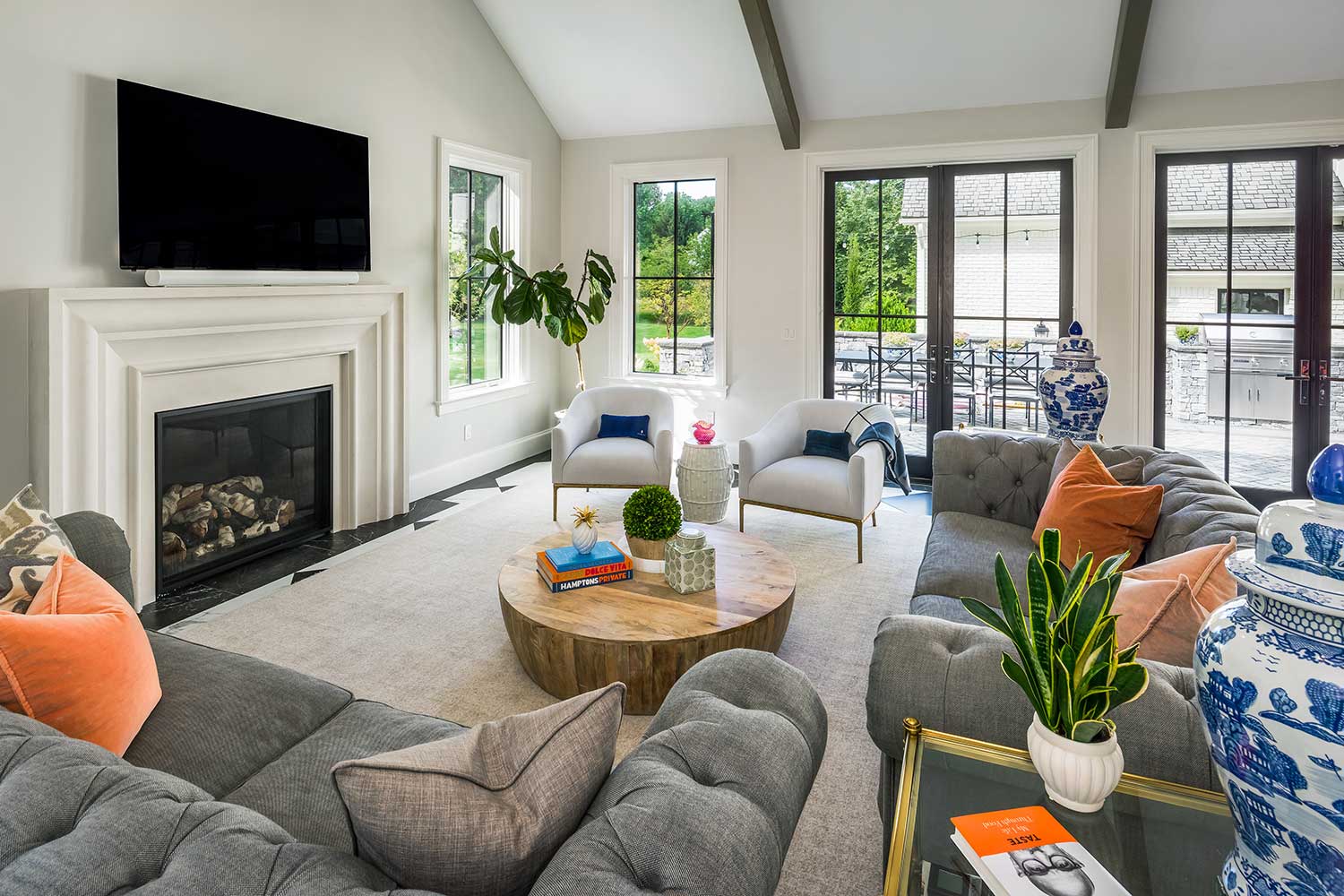
2022 Home Design Trends
What are the top 2022 home design trends?
The struggles of the last few years have made us more intimately connected to our homes than ever before. A renewed sense of homelife has shifted how we think about its design and its ability to be functioning, efficient, and nurturing. Our homes are now multi-purpose spaces, a place to work, connect with loved ones, entertain guests, and safeguard our cozy, private moments.
2022 home design trends harken a return to a longer-lasting style. Clients are more motivated to consider investing in remodels that make “forever homes” rather than quick fads. Current trends combine timeless traditional elements and modern simplicity in the permanent structure, with fun pops of personality in the decor and details. They consciously incorporate sustainable, long-term solutions that are good for the health of the homeowners and the environment. There’s also a deeper awareness of how our personal space may impact our emotions and wellbeing. In 2022, we will see more spaces tied to owners’ personalities, interests, and hobbies.
With more of our lives documented on social media, there is a push toward design that is luxurious but also approachable and accountable. Inspiration is instantly at your fingertips with trending topics to follow like #pantryorganization, #scandistyle, or
#greendesign. People seem more in touch with the design options available than ever before.
Here are the current home design trends for 2022:
1. Biophilic Design
Biophilic design is a term that describes building space that increases connectivity with nature. It emphasizes creating calming environments through natural lighting, ventilation, and lush greenery.
In biophilic design, fenestration is the main focus – think of a wall of glass bifold doors or floor-to-ceiling windows. When a stunning view of nature isn’t available, consider more intentionally-designed outdoor spaces to expand your living space.
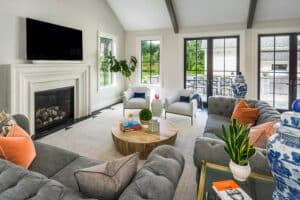
2. Whole-Home Makeovers
With a competitive real estate market, many homeowners have been purchasing homes that require a lot of work. They may be historic homes that need modernizing or be located in up-and-coming neighborhoods and require repairs. In many cases, a complete gut and remodel is in order. According to the 2022 U.S. Houzz & Home Study,
“While recent homebuyers comprise only 10% of homeowners who renovated in 2021, their median spend on renovation is nearly double that of renovating homeowners of all residency lengths…About 1 in 4 homeowners (26%) was motivated by wanting to customize a recently purchased home.”
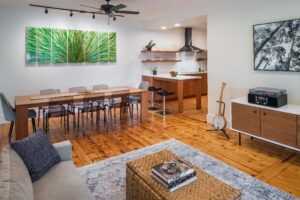
A whole-home renovation is an excellent opportunity to take advantage of a home with “good bones” or a prime location and make it your own. The only drawback is the cost, which can rival the home’s purchase price. One solution is to master plan a design and phase the construction over several years. This allows you to focus on the most critical priorities first and work out the other details later as you’ve spent more time getting to know the space and how you’d like to use it.
3. Separate Tub and Shower
The tub/shower combo, long a staple of the American bathroom, is phasing its way out. For most homeowners looking to remodel a primary bath, a separate walk-in shower and tub have become the top request. Provided you have the space, freestanding or apron tubs are a luxurious design feature, giving a spa-like feel to the room. Most prospects look to get rid of the tub entirely for guest baths, replacing it with a large, accessible walk-in shower instead.
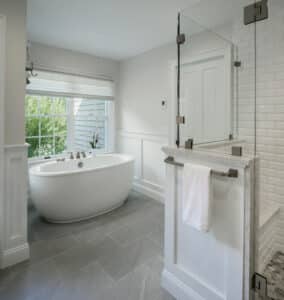
4. Sustainability
More and more homeowners are stressing the importance of sustainable materials and innovations.
“The key word is sustainability,” says Red House Design Build Lead Designer Kathy Royce. “More clients are looking to use durable and sustainable products. Better insulation, induction cooktops instead of a gas range, and even natural stone tile and countertops increase energy efficiency and make homes more environmentally friendly.”
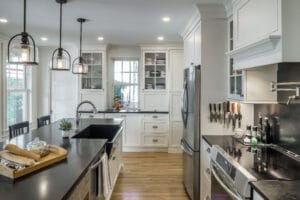
5. Additions & ADUs
“Every week, I get multiple calls for in-law suite additions or ADUs,” says Inside Sales Specialist Patrick McShane-Shanley. “Usually, they are looking to turn under-utilized space in their homes into semi-independent units for parents, in-laws, or their guests.”
The housing shortage has caused many prospective clients to look toward expanding their existing footprint rather than taking a risk in an inflated market. With Baby Boomers retiring, many households now have several generations under one roof. Requests for additions are increasing, as is the desire for space to make sense for the occupants as they age.
Aging in place, complete with curbless showers, wider clearances, and smart technology focused on accessibility, can be stylish while thoughtful. And it’s not something that you need to wait until you’re older to incorporate into your home. If you plan to invest in a major remodel to create a “forever home,” you must consider these design options now.
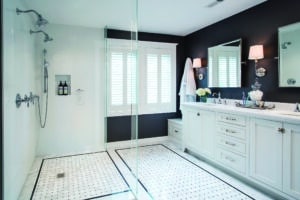
6. Scandinavian Style
The main elements of Scandinavian design are functionality, simplicity, and craftsmanship. This makes it easy to incorporate into various styles, like contemporary or traditional homes. This design style highlights natural materials (another trend on this list), especially light, neutral woods, and natural textiles. It pairs a Minimalist aesthetic with an airy space filled with light and plants – perfect for those looking to achieve a biophilic design.
7. Mudrooms
“Decluttering” has been a buzzword for the last few years, and busy families almost always see the need for more elegant ways to coral their stuff. For many, the solution to this is better storage for the things they don’t want to see every day but still can’t bear to let go of.
A mudroom offers a vital transition area between the outdoors and in, becoming a handy space for dedicated “drop zones” with storage for shoes and coats, sports equipment, or even pet washing stations.
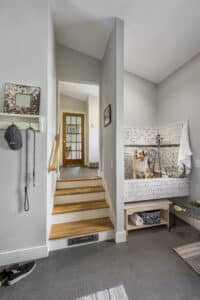
8. Natural Materials
“Warming spaces with solid wood details continue to play a major role when incorporating multiple design styles in a home,” adds Royce. Wooden cabinetry has made a comeback, but in 2022 it’s found in matte, muted oak or walnut tones that show off the grain. This style pairs well with Midcentury Modern, Scandinavian, or Traditional aesthetics. Organic materials mimic the calming, restorative ambiance of the outdoors and help ground a space.
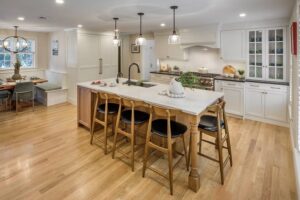
9. Warm Colors
Cool neutrals are taking a back seat in 2022 as people want to feel more cozy and relaxed in their space. The palette will stay very close to hues you’d find in nature—shades of green, earthy browns, baked terracotta, sunny yellow, and warm whites are the favorites right now.
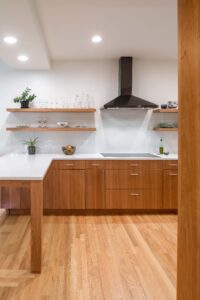
2022 Home Design Trends
The design trends of 2022 all have one thing in common – they feel grounded. Connecting our interiors with nature through windows, materials, and colors, we are creating spaces to feel nurtured. With that emphasis on the earth, it’s no surprise that sustainability is also on our minds. This comes through in the materials we choose and how we design our space – to last far into the future. A home to grow old in and appreciate for many years to come.
- Category :
- Type :

